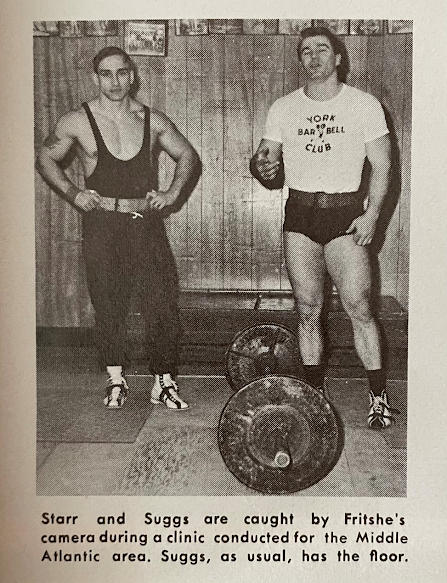Strength & Health March 1956
Weight-lifters have more fun than anybody. Why? Because they
have a purpose in life. They know what they want. Most people have no idea
whatever why they are alive, what they are working for, which way they are
going, or what constitutes a true state of happiness. Weightlifters and real
cast-in-the-plate bodybuilders have no doubt about the business of living
because they know the two things they want more than anything else… muscles and
strength, or strength and muscles.
If a skull doctor was called in to examine a weightlifter’s
noggin he would discover some odd lumps. Instead of the ordinary bumps of
curiosity, fear, love, hate, courage, avarice, etc., familiar to run-of-mine
folk, he would find a sort of relief map of the Rocky Mountain region with
prominent protuberances labeled biceps, triceps, lats, deltoids, traps, pull
and push. Since these lumps take the place of a lot of troublemakers like Hate,
Fear and Avarice, the practicing psychiatrist might be surprised to find that
the more lumps a guy has, the happier he seems to be. Perhaps it is better to
have muscles in the head than the usual obsessions of fear, hate and envy.
The reason I know weight-lifters have more fun than anybody
is because, since moving to Muscletown-on-the-Codorus, I am surrounded by
musclemen, and their blithe actions from day-to-day convince me that a direct
connection exists between muscular development and an outsize capacity for
enjoying life. The only question to be settled is whether they are happier
because they are so superbly healthy that all of life’s normal pleasures are
intensified, or because their heads have grown so muscular that unhappy extraneous
thoughts are unable to penetrate?
Over the doorway of our office you might place a sign…through
these portals pass the most muscular and strongest men in the world. We
have four or five former Mr. Americas working here, and as many former champion
weight-lifters, together with current champions in both categories. These guys
take barbell breaks instead of coffee breaks whenever they happen
to wander through the big York gym on their way around the building. And a lot
of the casual conversation runs something like this:
“Hiya, Steve, how are your big fat arms this morning?”
“I feel like a million, kid. Man, am I gonna take a terrific
workout this afternoon!”
Long about four o’clock, all roads lead to the gym, and the
casual customers who drop in to watch the great men train are entertained with
unusual high jinks and sparkling repartee. These out-of-town guests frequently
may be seen with a puzzled look on their pans as they sit on the visitor’s
bench near the doorway. They don’t know whether our guys are mad at each other,
or not, because the high power kidding that goes on could fool anybody.
Dick Bachtell, for instance, likes to train for
conditioning, and he may be doing a few light repetition snatches or
pull-up-and-presses on the platform before the mirror when big Jake Hitchens
finishes swelling up his biceps on the incline-bench with 90 lb. dumbbells, and
wanders across to look in the mirror to see if his 18 7/8 inch arms have shrunk
any in the last four minutes. So Dick looks at Jake with a pained look on his
face, and Jake looks back at Dick and sneers about the light weights he is
using. “Whatcha looking at me fork” he flips, “haven’t you ever seen a really
well-built man before?”
Then Jules Bacon starts needling Steve Stanko, who is lying
on a bench doing presses by the dozen. “Why don’t you get up offa your lazy
back and try to get in some kind of shape?” And Steve, who seems by some
curious alchemy of the brain, to be able to think of faster retorts while doing
fast presses with 300 lbs., begins to dish out sulphurous insults that would
make a thin-skinned stranger reach for his shootin’ iron. The oddest part of
the whole business is that these fellows can be doing heavy exercises while
talking-fit-to-kill and never miss a beat or a repetition.
I shall never cease to be amazed at how happily the York
lifters go about their training, even when, in some cases, this training has
been going on for twenty or thirty years! That’s why I am convinced they are
lucky, lucky guys to be such happy, happy people.





